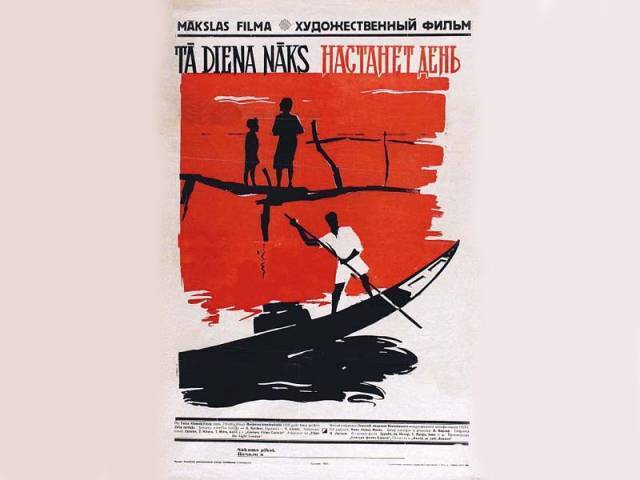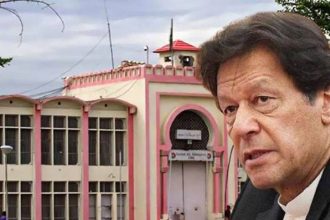As part of the non-competitive Cannes Classics program, Jago Hua Savera will join a line-up that includes films by Marlon Brando, Andreï Tarkovski and Jean-Luc Godard.
Talking to the media, an official at the Festival de Cannes confirmed that this is the first time a Pakistani film has been inducted into Cannes Classics. He requested anonymity, “Cannes Classics is a section of the Festival de Cannes dedicated to restored prints, documentaries about cinema, tributes and cinema masterclasses.” When asked on what basis was Jago Hua Savera shortlisted, he added, “We never comment on the selection. The fact that the film has been selected speaks for itself. We receive submissions from all over the world; films belonging to the history of cinema and those technically restored.”
The film’s original negatives were all lost, and the restoration was carried out through various rolls of 35mm black and white prints. The progeny of Nauman Taseer, the film’s late producer, took up this tedious task. His son Anjum Taseer explained the restoration process, “The element was carefully scanned. Pre-grading on Nucoda optimized the tone scale, followed by semi-automated passes through Phoenix to stabilize and remove defects—extensive manual cleaning using M.T.I. Nova, Diamant and Phoenix software restored the images as closely as possible to their original projection screening. A DI theatre fine grade followed.”
He said the entire cast and crew of Jago Hua Savera comprised first-timers, and Bengali star Tripti Mitra was the only renown actor. “It is a great honor for Pakistan that Jago Hua Savera was chosen … it is one of these rare gems from the past; perhaps the only Pakistani film to win so many international awards,” Anjum wrote in an email.
The restored version has previously been screened at the New York Film Festival 2008 and the Three Continents Festival 2007.The plightt of the fisherfolk
The 50s were quite a time for cinema in the region. While the Satyajit Rays were wreaking havoc in Calcutta, the Guru Dutts in Bombay were belting out hits, one after another.
Like everything else, film production was not in the best of conditions in Pakistan. One of the first Dhaka Studio productions, Jago Hua Savera, was shot in three-and-a-half months at the fishing village of Shaitnol near the capital of present-day Bangladesh. Filming equipment was ordered from the U.K. and the U.S. and taken to the location via river transport. Most crew members had flown in from abroad, including the Oscar-winning cinematographer Walter Lassally.
Jago Hua Savera tells the story of a fisherman who wants to one day own a boat. AgaistInstead, in the backdrop of extreme poverty, he battles the exploitation of the local moneylender and death.
In his essay Modernism and Film in South Asia, Rahul Sapra calls it Pakistan’s first realistic and experimental movie. “Jago Hua Saverawas an exception, since the genre of melodrama, influenced by mainstream Indian cinema, continued to dominate Pakistani cinema,” he writes.
Amongst other accolades, the film won a gold medal at the inaugural Moscow International Film Festival in 1959. Linking it to the coming closer of Pakistan and the then U.S.S.R., Hafeez-ur-Rehman Khan, in Pakistan’s Relations with the U.S.S.R., calls the win “progress in the cultural field.”
Faiz the screenwriter
How Faiz Ahmed Faiz got involved in the film merits a discussion. In the recently published Love and Revolution: Faiz Ahmed Faiz – The Authorised Biography, Ali Madeeh Hashmi notes that Faiz gained immense popularity after being released. “In Pakistan, he has welcomed back from prison a hero. During this time, he met AJ Kardar, son of the famed film-maker AR Kardar, who was originally from Lahore and had been one of the pioneers of the film industry there.”
It didn’t take long for Kardar junior to convince the poet. “AJ Kardar persuaded Faiz to write a film script which Faiz based on one of his favorite novels, The Boatman of the Padma [a translation of Manik Bandhopadhyay’s classic, Padma Nadir Manjhi], about the lives of Bengali fishermen.
In Faiz’s Letters to Alys, Salima Hashmi quotes an excerpt from her father’s letter to her mother when he wrote the film. “In the last three days, there has been no sun, the trees are dark with rain, and the wind feels heavy with nostalgic regrets. My window brings memories of Simla and Kashmir, and amid work and discussions, there are sudden stabs of homesickness, thoughts of you, and the urge to drop everything and return. I could work so much better if you were here, but it can’t be helped, so I’m trying to rush through it as quickly as possible.”
While the film owes greatly to its association with the larger-than-life figure that Faiz was, Bangladeshi film critic Alamgir Kabir notes, “Despite all its sincerity, Faiz failed to capture in the theme an authentic Bengaliness mainly because he never lived in this part of the country long enough to know its people and the land intimately enough.”
Drawing parallels between the film’s opening sequence and Luchino Visconti’s La Terra Trema, he wrote that the film offered a visual novelty for the foreigners but meant little for the East Pakistanis.
According to Pakistan Film Magazine, Jago Hua Savera was a commercial failure and was taken down from Karachi’s Jubliee Cinema (now Jubliee Centre) in just three days.
Tracing the reasons behind the film’s box office failure, Kabir says Jago Hua Savera could not be “understood by ordinary spectators as the language used in the film was a peculiar mixture of Bengali and Urdu easily understandable to neither community.” However, to him, the film remains the only example of efficient film-making in Pakistan.
In an interview with Ahmad Salim of the now-defunct Viewpoint, Faiz himself shed light on the film’s failure. “All right,t so you produce a romantic film like, for instance, Jago Hua Savera. Suppose it is ready for screening. But imagine the gatekeepers between the studio and cinema-screen do not share your ideology. They may not be concerned about its ideological point of view or its aesthetic aspect. As a result, it will not reach the audiences,” he said. Voicing another view that film puritans of today still hold, Faiz said, “It is a misconception that anything that has social perspective, or which has high aesthetic or technical standards will not be appreciated by the people.”
Inaugurated in 2004, Cannes Classics is a permanent fixture at the annual event to celebrate film history. The festival will be held from May 11 to May 22 this year and will be attended by the families of both Nauman and Faiz.






